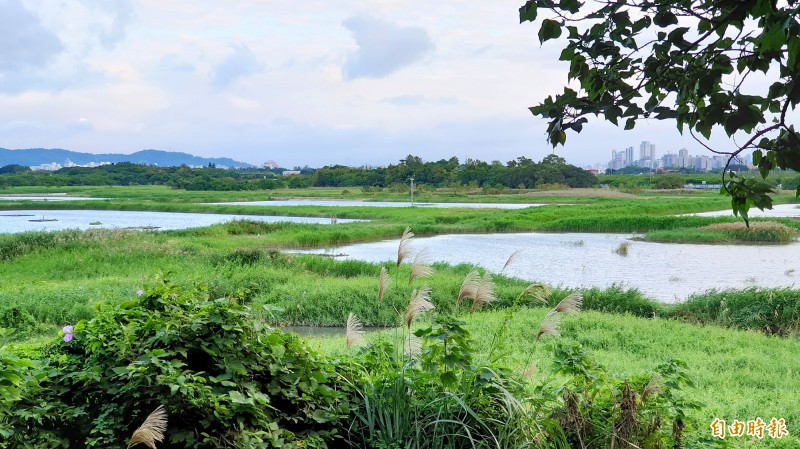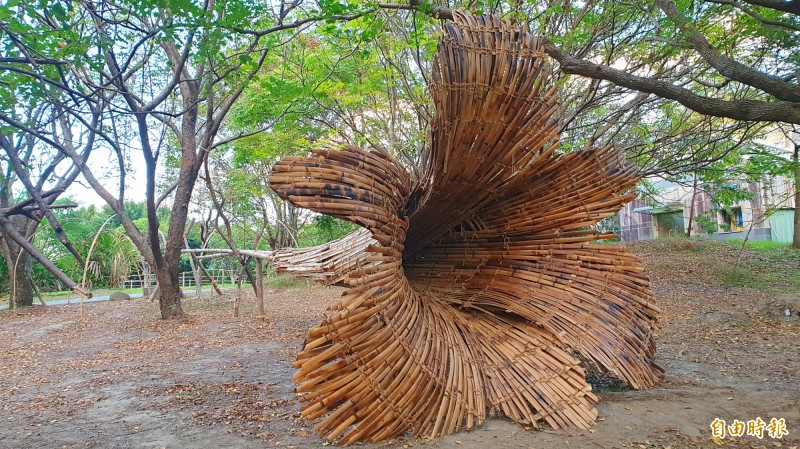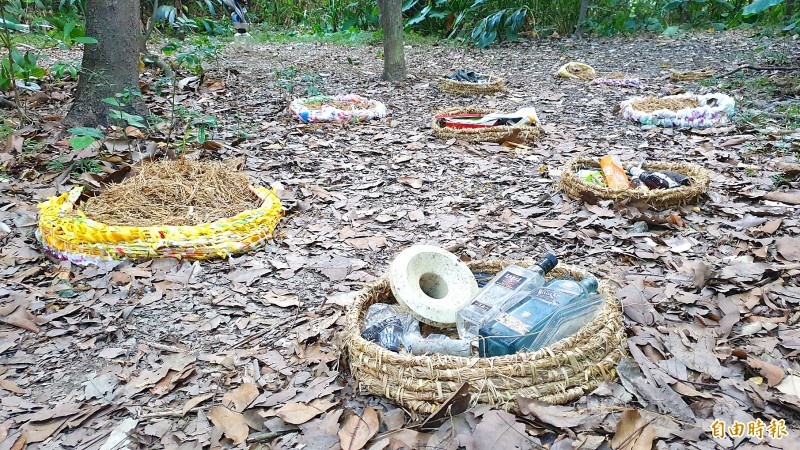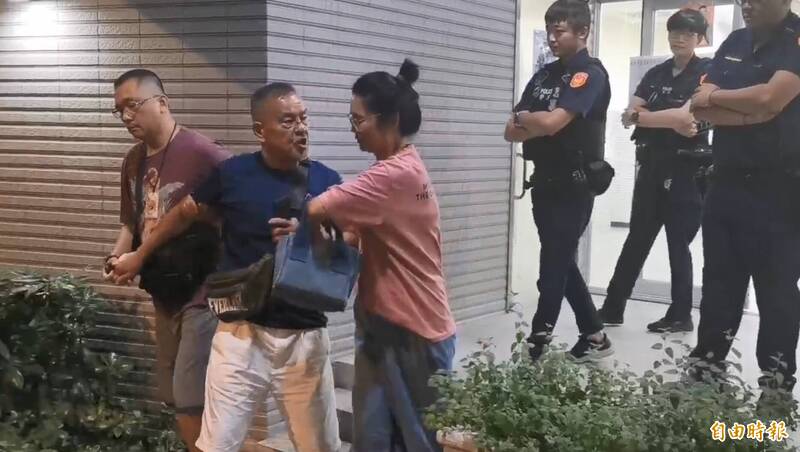《TAIPEI TIMES》 Lost art in the wetlands
This year’s artworks for the Guandu International Nature Art Festival are intriguing in concept and process, but the final representations are mostly underwhelming
By Han Cheung / Staff reporter
The Guandu plain, which contains a nature reserve and Taipei’s few remaining rice paddies, has been considered as a site for the Taipei Dome, Universal Studios and the Presidential Office.
I learn this information from an interactive model showing the proposed projects at the Guandu Nature Park’s (關渡自然公園) Educational Center, which includes copies of the plans and sticky notes for visitors to write down their wishes for the area’s future. Interesting as it is, though, this just feels like a regular museum display than a featured piece for the Guandu International Nature Art Festival.
Although well-intentioned with the theme “It’s About Time” (刻不容緩), which emphasizes sustainability and the relationship between humans and the environment by having the artists work with the park’s researchers, the artworks are mostly underwhelming and easy to miss. It seems that many of the pieces were process-based, created during a one-month artist residency period, and what we see a month after the opening are just the remnants, which don’t amount to much without explanation.
The exhibit runs until Dec. 31, and while the art works may not be as intriguing as past years, there’s never too many excuses to visit the nature park and its lush wetlands teeming with flora and fauna. It’s easy to have the whole place to yourself and forget that you’re just a 15-minute walk away from the Guandu MRT Station.
I first visited the park around this time of the year in 2017. It was apparent that an art exhibition was going on, and although I came for the nature, I recall spending quite some time looking at the intricate flourishes between the trees and ponds that gave some color to the park. The work from last year shown on their Web site leans toward the monumental, transforming the landscape instead of trying to completely blend into it.
I didn’t need to use a guide two years ago; it was enjoyable to just wander and look at the offerings — whereas this year I probably would have walked past most of the installations had I not followed the provided map.
The first piece from the main gate, for example, is hidden along a side path and looks just like a few heaps of garbage. Only by scanning the QR code and reading the artwork description did I learn that the rubbish was gathered as part of a river clean-up event with a nearby junior high school and placed in baskets made with rice stalks that they helped plant.
Next to them are recycled plastic bowls of harvested rice. It’s supposed to be a transposition of materials to make the viewer think about the environment and the relationship between the river and life, but it just doesn’t stand out enough to make people pay attention in the first place. As mentioned earlier, the process is interesting, the children probably learned a lot, but the resulting display doesn’t live up to it.
Next to this work is a tangled web of garbage hanging from a tree. It commands some attention, but the description shows that it was part of a one-month art experiment to collect rainwater through this “rubbish rainchain” to see how it changes the water quality. This is a worthy idea, but the glass container at the bottom is empty and the viewer is left puzzling over the used apparatus and not the results.
The rest of the artwork more or less falls into this pattern. An obelisk, titled Elapsed Monument, made from various materials, sits beyond a small pond, which is actually based on data that artist Huang Kuan-ling (黃冠苓) gathered through working with on-site bird researchers. The materials — plastic, stone, wood and so on — of the obelisk are stacked from the bottom according to its ability to withstand the elements, and representing the number of birds and the degree of their endangerment. Again, interesting idea, but still, much more context than representation.
The Guandu Archaeology project seemed like a lot of fun to put together. The artist spent the month interviewing park staff and locals and digging up materials from an “excavation site” with young participants. But the display doesn’t do the process justice. Few people are going to stand there and read through all the lengthy interviews — video would have been a much better way of presenting this.
I have to ask the park staff for specific directions to find Spread Flowers, which is comprised of tiny flowers made of clay from the Guandu plain, planted in a tiny pond next to a small ditch behind the Education Center. It’s supposed to relate to the soil and the wetlands sustaining life.
And as if everything wasn’t underwhelming enough, the printed visual representations of the nature center’s frog survey by digital storytelling graduate students are inexplicably small and hard to read. Wouldn’t a video or animation have worked better if the course was digital storytelling?
Anyhow, despite the disappointment of the artwork, the nature center is always an enjoyable place to spend a rare partially-sunny afternoon. As I watch the sun slowly set over the ever-expanding marshlands, I felt that it was still worth the trip.
新聞來源:TAIPEI TIMES

Peng Yu-hong and Guandu Junior High School, Rubbish Rainchains (2019). Photo: Han Cheung, Taipei Times

Guandu Nature Park provides splendid views of the lush wetlands and beyond. Photo: Han Cheung, Taipei Times



















